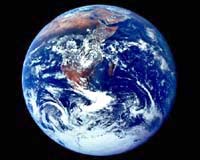
 |
"There are about 10 left, at the most," says Ian Baird, a Canadian biologist who worked for a decade in this region where the Mekong opens out to a width of more than 14 kilometres.
Even including other Irrawaddy dolphins living elsewhere along the mighty waterway which snakes through Indochina, there are "less than a hundred" and this tiny community "is likely to disappear", he said.
Every day at dawn, the peace of this natural reservoir, dotted with hundreds of tiny islands, is disturbed by the buzzing of traditional "long-tail boats" as they bring in the first tourists of the day.
At the height of the dry season, the water levels sink and the dolphins are trapped in a small lake of just a few square kilometres. The visitors need only to wait a few minutes before they see a fin emerge from the muddy waters.
"At least 10 tourist boats come here every day," says one of the men steering the long, skinny boats.
Baird says the traffic, which can have a fatal effect on the delicate animals' ability to feed themselves, must be controlled.
"There is certainly a need for more rules to protect the dolphins," he said.
Bounpheng Phylavanh, a Laotian who worked with Baird and whose home looks out directly on the dolphin lake, says any agreement would have to be forged with authorities on both sides of the river.
But between the governments of communist Laos, and Cambodia -- emerging as a democracy after the genocidal 1970s reign of the Khmer Rouge -- that will be difficult to achieve.
Bounpheng Phylavanh says the boat drivers risk destroying the business which they rely on for their livelihood.
"If there are too many tourists, they endanger the dolphins," he says. "But if there are no dolphins, there are no tourists."
The dolphins began dying out several decades ago, when the villagers began to use nylon fishing nets which ensnare the mammals and prevent them from swimming to the surface to breathe.
Baird set up a program to pay the fishermen to cut their nets and release any captive dolphins, but says it did not prove very effective.
"Mostly the dolphins have drowned by the time the fishers get to them," he says.
The biologist says it is also difficult to convince individual fishermen, who depend on their nets for their living, that they could drive the dolphins to extinction, given that most of them have not snagged one in many years.
Despite the difficulties, in the early 1990s the Lao villagers tried to set up a conservation zone for the dolphins.
"But this had to be stopped after the Cambodian side refused to abide by it. The problem in this area is that if the fishers remove their nets, the Cambodians will just put theirs in instead," says Baird.
Another major threat to the dolphins has been "dynamite fishing", a technique where explosives are thrown into the water to stun fish that are then scooped from the surface. The region is close to an old Khmer Rouge stronghold and hand grenades are plentiful and inexpensive.
Thanks to a campaign by environmental groups, this shockingly destructive and wasteful technique has been banned in the past two years, but undoing the damage is not so easy.
"When I was child, there were dolphins everywhere here," says Khaikaew, a 40-year-old villager who rents out her boat for the tourist trade. In 1993, there were about 30 left and now there are just a handful, she says.
As the numbers dwindle, their chances of survival become more remote. Each dolphin can have just one baby every two years. Last year, two were born but one died soon after.
"It appeared on the surface, very dried out," recalls Khaikaew.
The cause of the baby dolphin's death is not known. Some villagers say it had a cut on its face, which could indicate a collision with a motor boat.
"The decline of the dolphins represents the decline of the Mekong itself," says Baird. "Large dams are of particular concern because they are changing the hydrology of the rivers," and therefore the entire ecosystem.
Far from being indifferent, the villagers are very concerned about the disappearance of the Irrawaddy dolphins. They regard the animals as the reincarnation of humans, and they figure large in the community's legends.
"A long time ago, a man and a woman were on a raft," says By Devezy, an old Laotian.
"The raft capsized, and they drowned. The man was then reincarnated as a dolphin and the woman as a river tern. That is why, ever since, the dolphin lifts his head from the water when this bird passes above."
TERRA.WIRE |